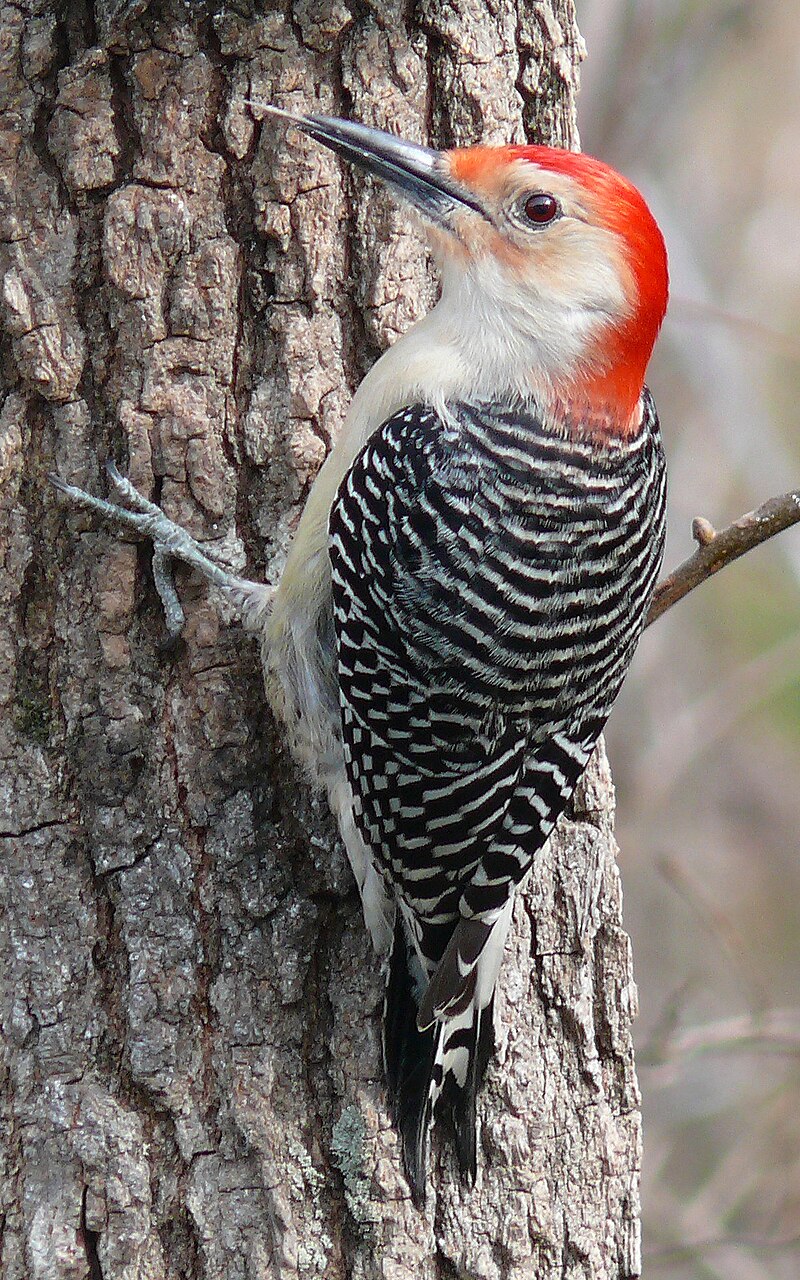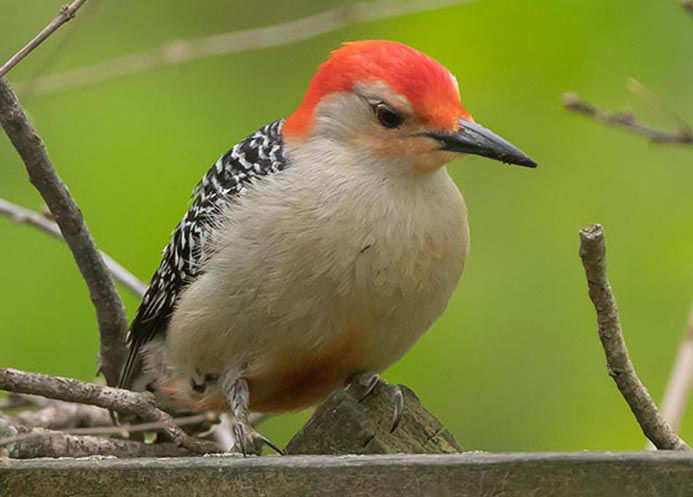Native Woodpeckers in Florida: A Guide to Types and Behaviors
Native Woodpeckers in Florida: A Guide to Types and Behaviors
Blog Article
Woodpeckers: A Comprehensive Guide to Recognizing These One-of-a-kind Birds
Woodpeckers, with their distinct behaviors and physical attributes, have long astounded the interest of ornithologists and nature fanatics alike. From their rhythmic drumming echoing through the timbers to their impressive adjustments for scaling tree trunks with simplicity, these birds present an interesting study in avian biology. Nonetheless, what absolutely sets woodpeckers apart is not simply their striking look but also their crucial role in maintaining the delicate balance of communities. As we explore the detailed anatomy, varied types, and ecological value of woodpeckers, a deeper recognition for these special birds and the secrets they hold unfolds.

Woodpeckers' Drumming Behavior
Woodpeckers show a rhythmic and specific drumming behavior that serves numerous important functions in their day-to-days live. This actions is mostly connected with communication, territory defense, and foraging. The distinct drumming audio is developed by the rapid pecking of their beaks against tough surface areas such as tree trunks, branches, or also metal objects.
Communication is a critical aspect of woodpecker behavior, and drumming plays a significant duty in this procedure. Woodpeckers utilize drumming to establish their visibility, attract companions, and preserve call with their companions and children. The frequency, intensity, and duration of drumming series share particular messages to various other woodpeckers in the area.
Along with interaction, woodpeckers use drumming habits for area defense. Woodpeckers in Florida. The loud and repeated drumming works as a cautioning to possible burglars, indicating that the area is currently asserted. By developing their area with drumming, woodpeckers reduce the chance of disputes over important sources such as food and nesting websites
Moreover, woodpeckers additionally employ drumming as a foraging strategy. The rhythmic pecking aids them locate insects hiding under the bark of trees by producing resonances that interrupt the prey's concealment. This habits showcases the flexibility and resourcefulness of woodpeckers in using their drumming abilities for numerous essential objectives.
Distinct Adaptations for Tree Climbing
Having actually mastered the art of drumming to connect, protect area, and forage, woodpeckers have developed one-of-a-kind adjustments that promote their remarkable climbing up capacities in their arboreal habitats. One key adaptation is their specific feet. Woodpeckers have zygodactyl feet, with two toes aiming onward and 2 toes pointing backward. This arrangement offers a strong grip on the vertical surfaces of trees, allowing them to stick effortlessly while foraging for insects or drumming. Furthermore, woodpeckers possess rigid tail feathers that act as a prop to sustain their bodies as they climb. These tail feathers supply stability and equilibrium, making it possible for woodpeckers to maneuver up tree trunks with accuracy and dexterity.
Additionally, woodpeckers have powerful neck muscular tissues and a distinct skull structure that aid in their climbing abilities. Their solid neck muscular tissues enable them to swiftly eat tree bark without experiencing whiplash, while their thick skull and small mind work as shock absorbers, safeguarding them from the influence of repeated drumming. These adaptations jointly allow woodpeckers to browse the vertical world of trees with performance and elegance.

Duty of Woodpeckers in Ecosystems
Playing an essential role in forest ecological communities, woodpeckers contribute significantly to the balance and health and wellness of their environments through their unique behaviors and interactions with other types. One of the vital ecological functions of woodpeckers is their duty in regulating insect populaces. By foraging for pests under the bark of trees, woodpeckers help regulate parasite populations, preventing episodes that could damage the total health of the click resources woodland. In addition, woodpeckers produce cavities in trees that work as critical nesting sites my response for a range of other bird varieties, advertising biodiversity within the ecological community.
Furthermore, the drumming and articulations of woodpeckers play an essential function in communication and region facility. These audios not just offer to draw in friends however additionally assist define boundaries between different woodpecker regions, reducing problems and promoting an unified conjunction within the woodland neighborhood. Overall, the visibility of woodpeckers in woodland ecosystems highlights their significance as keystone species, influencing the dynamics and operating of these habitats in multifaceted means.
Makeup: Specialized Beaks and Feet
In the detailed web of forest ecosystems, the specialized beaks and feet of woodpeckers are important adjustments that allow them to satisfy their crucial ecological roles. Woodpeckers have special anatomical functions that are especially developed to aid them in their foraging and nesting actions.
One of the most distinguishing characteristic of woodpeckers is their solid, chisel-shaped beaks. These beaks are flawlessly adjusted for boring into wood to reveal bugs, larvae, and sap covert below the bark of trees. The solid muscle mass and durable framework of their beaks permit woodpeckers to peck at a rate of as much as 20 times per second without causing damage to their heads.
In addition, woodpeckers have specialized feet that help in their acrobatic climbing capacities. Their feet have two toes directing forward and 2 toes aiming in reverse, providing a solid grip on vertical surface areas (Woodpeckers in Florida). This special foot setup, along with rigid tail feathers that act as a helpful prop, allows woodpeckers to cling to tree trunks and branches with ease while they look for food or dig deep into nesting tooth cavities
Woodpecker Variety Variety
Woodpeckers are a diverse check out here team of birds discovered throughout different ecological communities worldwide, with over 200 known species displaying adaptations to different atmospheres. Woodpeckers have advanced to live in a range of environments, from forests and forests to grasslands and deserts, each providing distinct obstacles that have influenced the advancement of distinct woodpecker types.
These adjustments allow woodpeckers to forage efficiently in their corresponding habitats, lowering competition amongst types and advertising specific niche differentiation. Additionally, geographic seclusion and historical factors have actually played a role in shaping the circulation and variety of woodpecker types, leading to the broad variety of specialized adjustments seen in these interesting birds.

Final Thought
To conclude, woodpeckers are interesting birds that exhibit special drumming habits, specialized adjustments for tree climbing, and play crucial roles in ecosystems. Their anatomy, including specialized beaks and feet, enables them to prosper in their setting. With a varied variety of woodpecker species discovered worldwide, these birds are important for keeping the health and balance of forests and timberlands. Recognizing and valuing the details of woodpeckers can give important insights into the environment.
Report this page